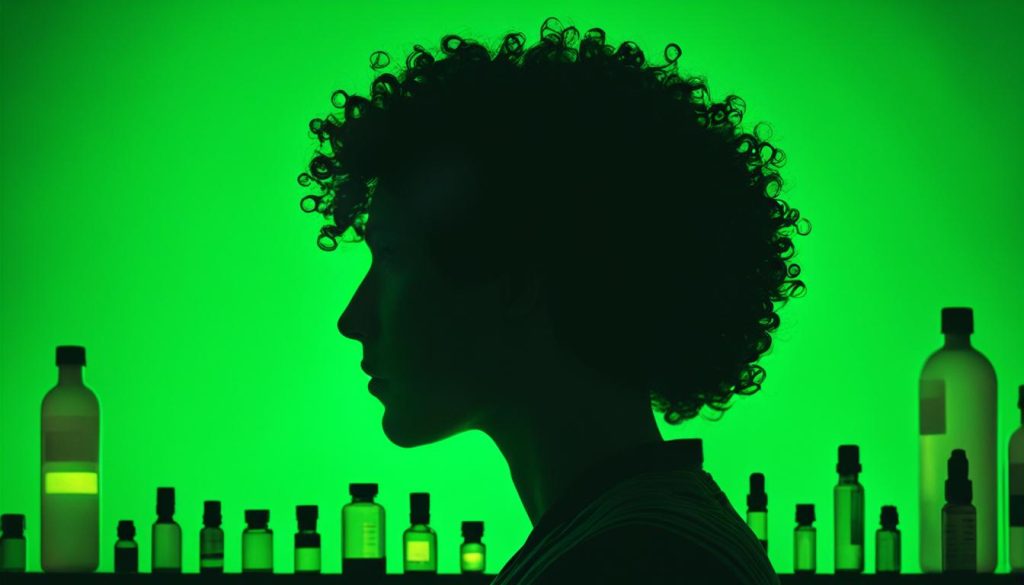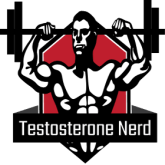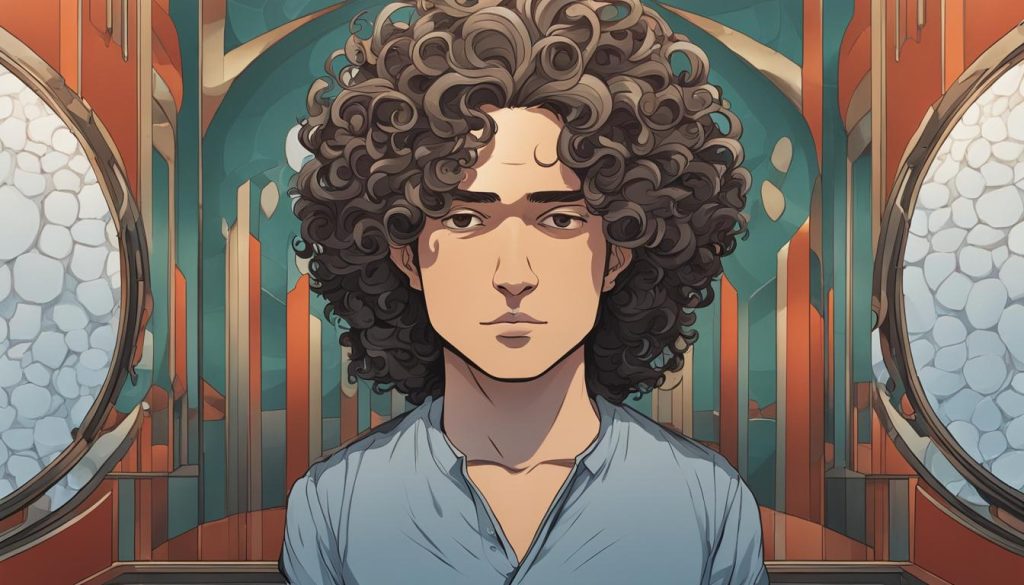As a male health expert, I often come across fascinating questions related to hormones and their effects on various aspects of our bodies. One query that frequently arises is whether testosterone can make your hair curly. It’s a compelling topic that resonates with both men and women, as hair texture plays a significant role in our overall appearance and self-image.
The relationship between testosterone and hair curliness is a complex one. While genetics primarily determine our hair type, it is believed that excessive testosterone and/or testosterone sensitivity can cause straight hair to become curly or frizzy. These changes in hair texture, including increased curliness, are often the first symptoms noticed by women with hormone-related disorders such as thyroid disorders, polycystic ovarian syndrome, and female androgenic alopecia.
Fluctuations in hormone levels, particularly testosterone, can influence hair texture, especially in individuals with hormone-sensitive hair follicles. It’s important to note that not everyone will experience the same effects, as hair changes can vary widely among individuals.
Key Takeaways:
- Excessive testosterone and testosterone sensitivity can cause straight hair to become curly or frizzy.
- Hormone-related disorders such as thyroid disorders, polycystic ovarian syndrome, and female androgenic alopecia can lead to changes in hair texture, including increased curliness.
- Fluctuations in hormone levels, particularly testosterone, can influence hair texture, especially in individuals with hormone-sensitive hair follicles.
- It’s important to note that not everyone will experience the same effects, as hair changes can vary widely among individuals.
- Further research is needed to fully understand the relationship between testosterone and hair curliness.
The Link Between Testosterone and Hair Changes during Gender Transition
When undergoing gender transition, hormone therapy plays a significant role in achieving desired physical changes. Testosterone medications, specifically, can lead to various transformations in hair growth and texture. This section explores the link between testosterone and hair changes during gender transition.
Transgender men, transmasculine individuals, and nonbinary people who opt for hormone therapy may experience a range of hair-related alterations, including changes in hair patterns, curliness, and texture. As a “masculinizing” hormone, testosterone stimulates hair growth and can lead to changes in both body and scalp hair. While the specific effects of testosterone on hair texture may vary from person to person, hormone therapy has the potential to increase curliness and bring about structural changes in the hair.
It’s important to note that the impact of testosterone on hair texture is not uniform. Hair changes can be unpredictable and may depend on individual factors such as genetics, hormone levels, and response to treatment. Some individuals may see a significant increase in curliness, while others may experience only minor changes or none at all.
Increase in curliness and changes in hair structure can be observed during hormone therapy.
For a clearer understanding, take a look at the table below that summarizes the key points regarding the effects of testosterone on hair during gender transition:
| How testosterone affects hair during gender transition |
|---|
| Stimulates hair growth |
| Increases curliness and changes in hair structure |
| Effects can vary among individuals |
It’s important to consult healthcare professionals specializing in transgender healthcare to understand the potential hair-related changes that may occur during hormone therapy. They can provide personalized guidance and support based on individual needs and goals.
Now, let’s delve further into the impact of testosterone on hair texture and examine hair changes during testosterone replacement therapy in the following section.
Hair Changes on Testosterone Replacement Therapy
Undergoing testosterone replacement therapy (TRT) can lead to various changes in the body, including alterations in hair texture and curliness. While the precise mechanism behind these transformations is not fully understood, it is believed that the presence of testosterone can influence the structure and curl pattern of hair.
Anecdotal evidence suggests that individuals who undergo hormone therapy, particularly those undergoing female-to-male transitions, may experience increased curliness or changes in hair texture as a result of elevated testosterone levels. However, it is important to note that the effects of hormone therapy on hair can vary significantly from person to person. Not everyone will experience the same transformations or observe the same degree of change.
Further research is needed to fully understand the intricate relationship between testosterone and hair curliness. By gaining deeper insights into this phenomenon, we can potentially uncover new opportunities for individuals seeking to modify their hair texture or curl pattern.
Hormonal Influence on Hair Curliness
The intricate interplay between hormones and hair curliness is an area of ongoing scientific exploration. The relationship between hormone-induced changes in hair texture and curliness is complex, influenced by factors such as hormone sensitivity and individual genetic makeup.
Some individuals with hormone-sensitive hair follicles may experience noticeable alterations in curl pattern when exposed to elevated testosterone levels. This can express as an increase in curliness, transforming straight hair into waves or curls. The extent and nature of these transformations may be influenced by factors such as hormone dose, treatment duration, and individual variations in hormonal response.
It is crucial to approach any changes in hair texture or curliness with an open mind and an understanding that the effects can vary significantly among individuals. What might result in pronounced transformations for one person may have minimal or no impact on another.
| Hormonal Changes | Effect on Hair Curliness |
|---|---|
| Elevated levels of testosterone | Increased curliness or changes in hair structure, particularly in individuals with hormone-sensitive hair follicles. |
| Hormonal imbalances | Potential influence on hair texture and curl pattern, although the specific effects can vary significantly. |
| Hormone therapy | Individuals undergoing hormone therapy may experience alterations in hair texture and curliness as a result of elevated testosterone levels. |
Table: Summary of Hormonal Effects on Hair Curliness
The table above summarizes the potential impact of hormonal changes and hormone therapy on hair curliness. It is essential to remember that the observations presented are based on available data and anecdotal evidence, and individual experiences may deviate from these general trends.

Exploring the Relationship between Testosterone and Hair Curliness
Testosterone, a hormone present in both males and females, can have a significant impact on hair texture and curliness. Individuals with hormone-sensitive hair follicles may experience changes in their hair structure when exposed to elevated levels of testosterone. While the exact relationship between testosterone and hair changes is complex and not fully understood, evidence suggests that hormone therapy and hormonal imbalances can influence hair texture and curl pattern.
Some individuals may notice an increase in curliness or changes in hair structure when their testosterone levels are higher than normal. However, it’s important to note that these effects can vary among individuals, and not everyone will experience the same hair changes.
Further research is needed to fully comprehend the intricate connection between testosterone and hair curliness. Scientists are exploring how hormonal imbalances and hormone therapy may impact hair texture, particularly in those with hormone-sensitive hair follicles. Understanding the role of testosterone in hair curling can help develop appropriate treatments and interventions for individuals experiencing hormone-induced hair changes.
FAQ
Can testosterone make your hair curly?
Excessive testosterone or testosterone sensitivity can cause straight hair to become curly or frizzy. Changes in hair texture, including increased curliness, are often observed in women with hormone-related disorders and individuals undergoing hormone therapy.
How does testosterone affect hair curl?
Fluctuations in hormone levels, particularly testosterone, can influence the curliness and texture of hair, especially in individuals with hormone-sensitive hair follicles.
Can hormone therapy change hair texture?
Hormone therapy, such as testosterone replacement therapy, can lead to changes in hair growth and texture. Transgender men, transmasculine individuals, and nonbinary people who undergo hormone therapy may experience alterations in individual hair patterns, including increased curliness and changes in hair structure.
Do hormone imbalances affect hair curliness?
Hormonal imbalances, including elevated testosterone levels, can influence hair texture and curl pattern. Some individuals may experience increased curliness or changes in hair structure as a result of hormonal imbalances.
What is the relationship between testosterone and hair curliness?
The exact relationship between testosterone and hair curliness is complex and not fully understood. However, there is evidence to suggest that testosterone can influence the structure and curl pattern of hair, particularly in individuals with hormone-sensitive hair follicles.
References:
- https://allnurses.com/testosterone-curly-hair-t115536/?page=2
- https://getplume.co/blog/how-will-testosterone-change-my-hair-during-my-gender-transition/
- https://forums.t-nation.com/t/curly-hair-from-trt/269717
I've been fascinated by natural male hormone optimization since 2016. And ever since I've been going through boatloads of different meta-analyses and scientific data associated with increasing testosterone levels naturally. I hold a PhD degree in public health and have 10+ scientific publications on Google Scholar. Thus, in my collective work here you'll find helpful tricks, natural remedies, detailed product reviews (including stuff I've personally tried)... and more!



